“In memory of Bruce D. Omholt, a never forgotten friend”
This article was written by Sharon Readey about the technology of the Nautilus ECCR. It is an ode to Bruce Omholt who developed this rebreather. Peter Readey of SMI helped with the development of this rebreather. Unfortunately, the manufacturer is no longer active and the Nautilus will unfortunately end up in the historical archives. This article aims to safeguard this historical development. Any contributions that add to this article will be greatly appreciated.
20 june 2022
The Nautilus ECCR
By Sharon Readey
The Nautilus is an electronic closed circuit mixed gas rebreathing system, conceived in 1998 and designed primarily by Bruce D Omholt with input from Peter Readey. It was manufactured in Mexico by B & E Manufacturing S.A. de C.V, which was set up by Bruce (the B) who handled the design with Peter, set-up of manufacturing processes etc and Everardo Noltenius (the E), who handled operating the manufacturing plant and training. Unfortunately Everardo died before the unit made it to production and Bruce brought out his widow, transferring the shares in 2005 to his son Casey, who stepped up to take over production and training, working with his father to set up the facility and dive store down in Cabo San Lucas. The Nautilus CCR development and production facility was closed in 2013 and the company reorganized as Nautilus Dive Tech at the companies facility in Cabo San Lucas where it continues to provide support and training for all levels of diving. Regretfully after a battle with cancer Bruce passed away in 2016. The Nautilus is designed to be “Dive Ready” from the get go, you buy it as a complete unit, it is not modular. It features a split rear counterlung configuration, back mounted radial scrubber and cylinders and an integrated single console display. This console houses the fiber optic Primary and Secondary Displays, with integrated battery and sensor drift alarms, the diluent and oxygen pressure gauges and the manual addition gas activators for both diluent and Oxygen supply, in a unique articulating knuckle assembly.
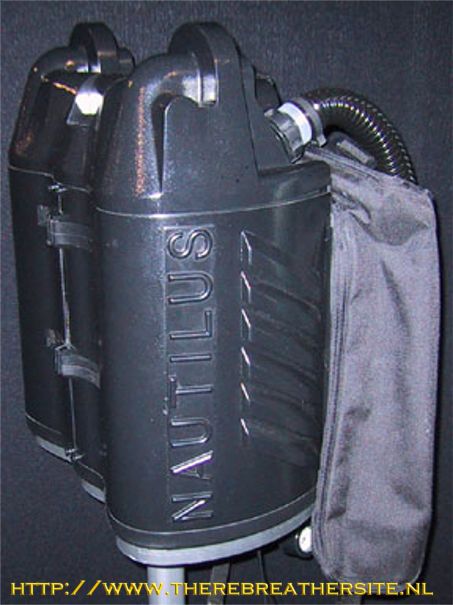
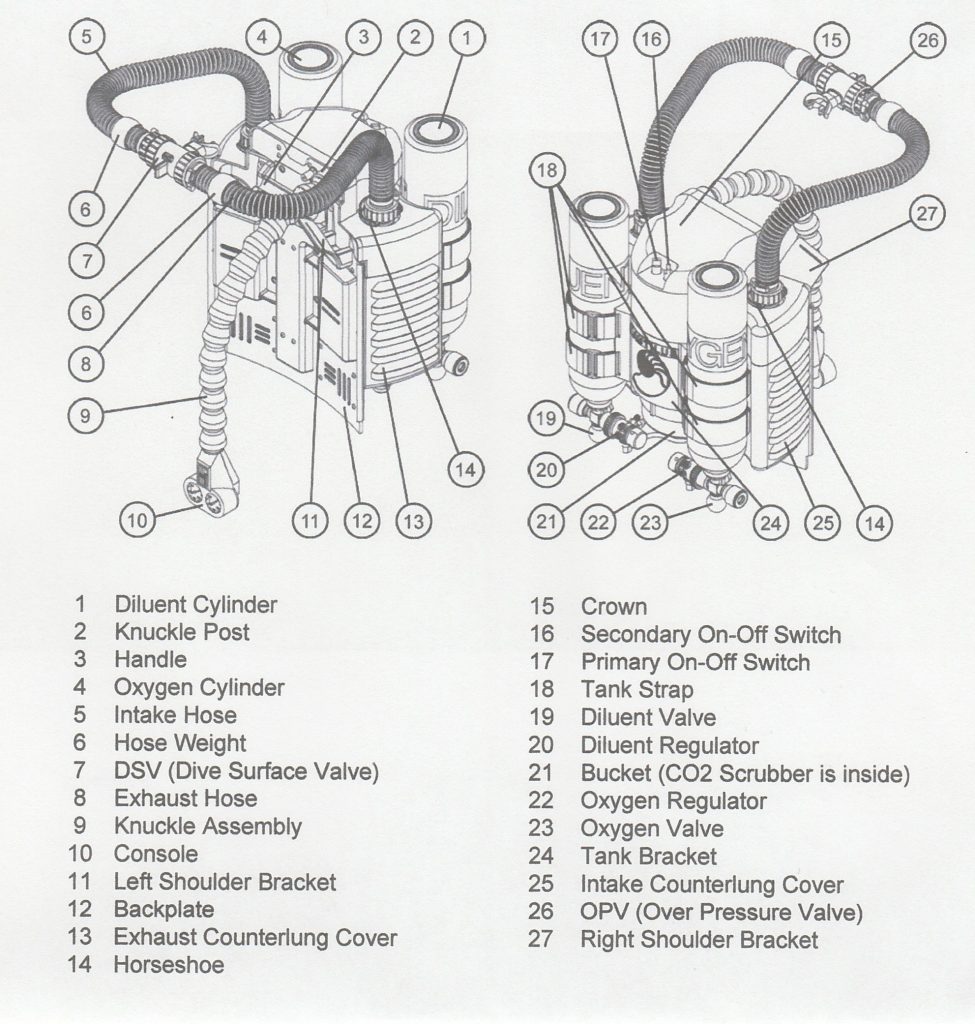
The gas flow around the loop flows right to left, the diver inhales from the right hand counterlung. Automatic Diluent addition is added into the connection port cavity at the top of the inhalation lung, there is also an over pressure relief valve on the inhale side of the DSV. The exhaled breath then goes into the left hand counterlung, venting from the top through a slim port into the center column of a 5.5lb radial flow scrubber (same as early PRISM Topaz). The gas travels down the column and radiates out to the bucket walls, then crosses the oxygen sensors on it’s way out to the inhalation lung for the cycle to be repeated.
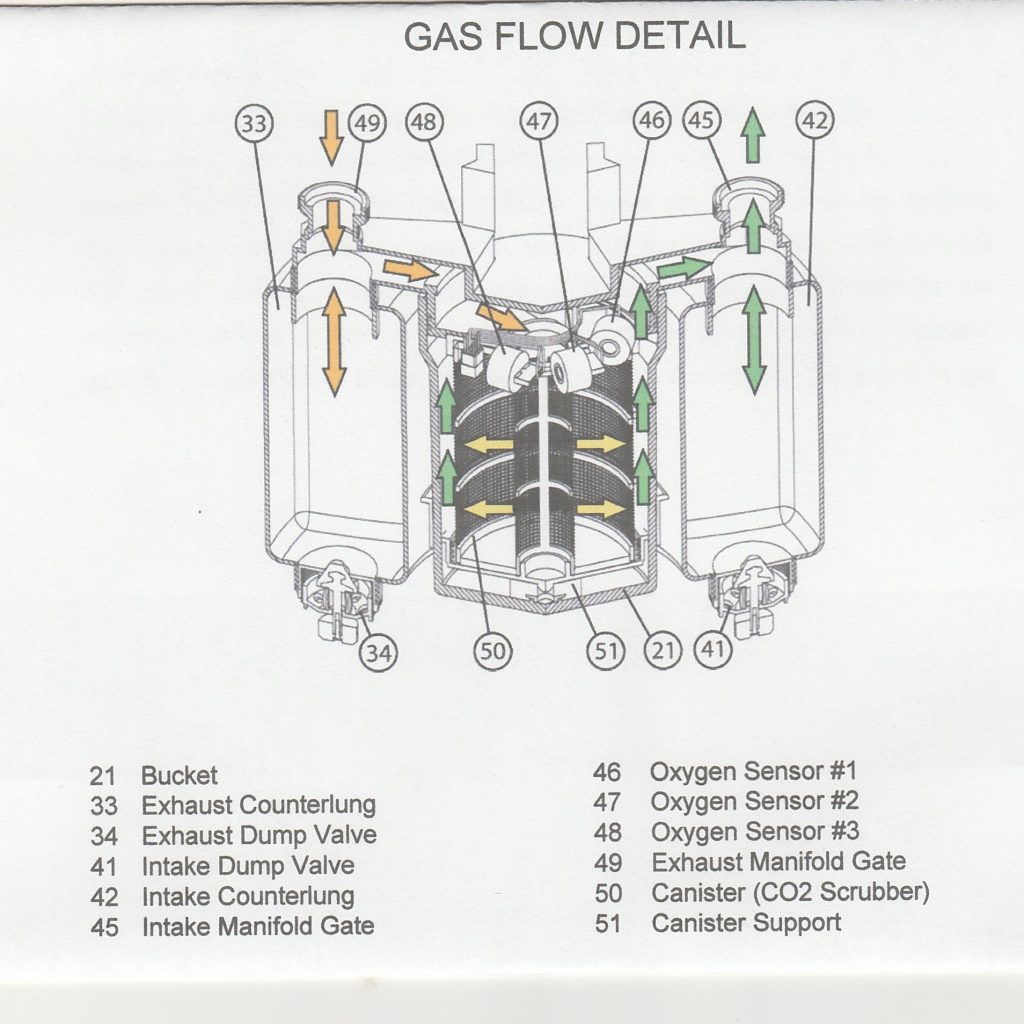
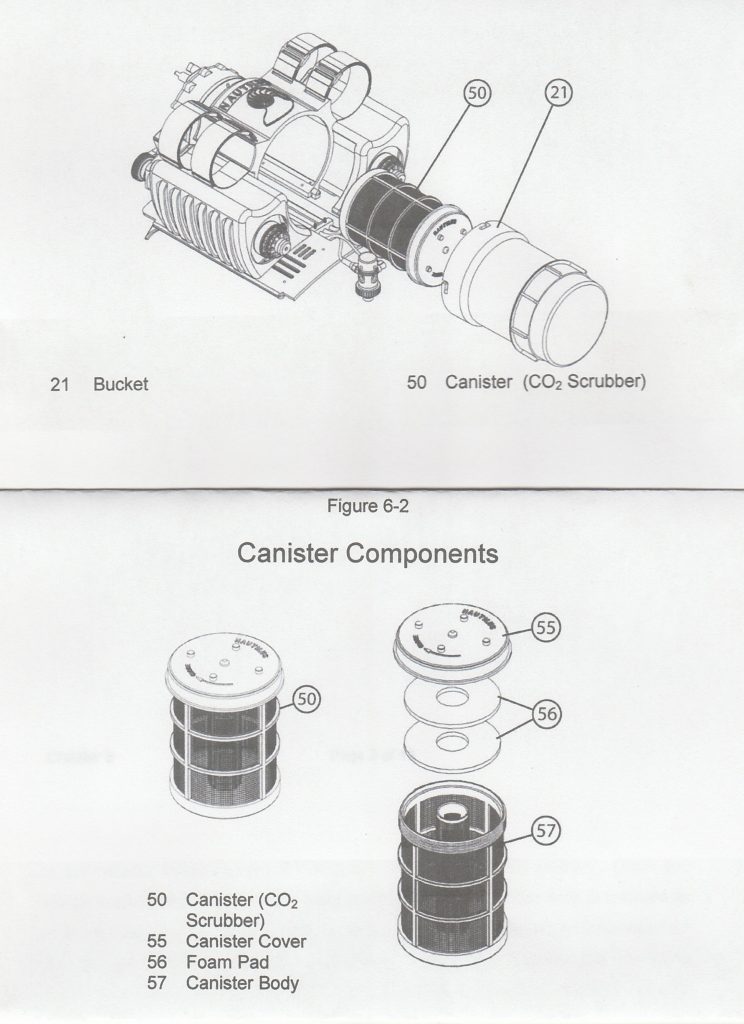
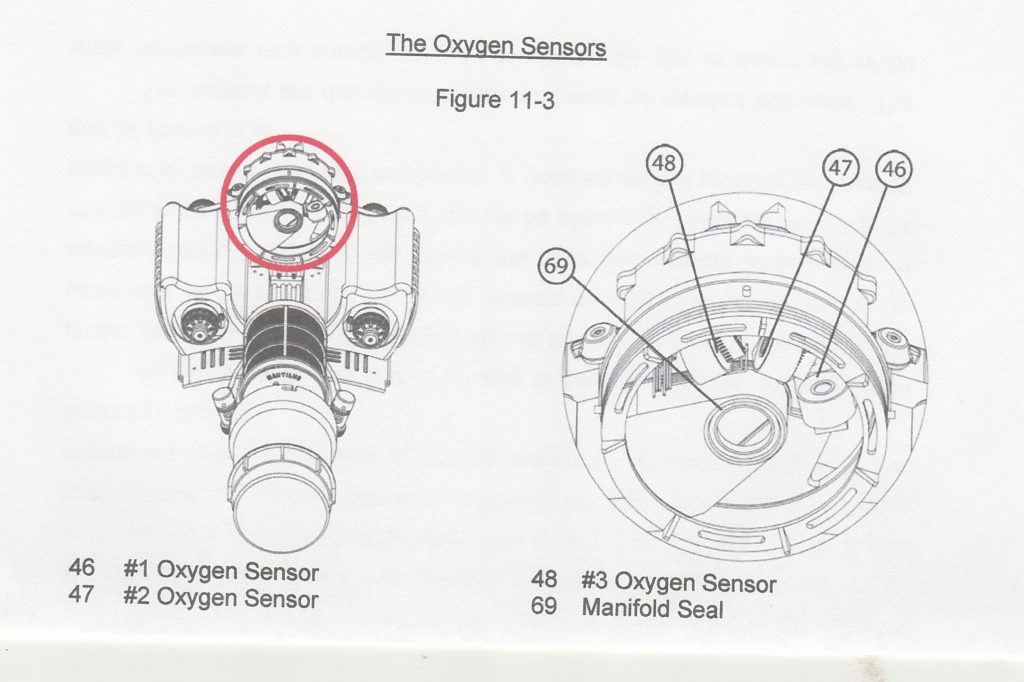
The electronics have some commonality with the PRISM Topaz, they are fitted with a depth sensor which allows the electronics to know where they are relative to the surface at all times, automatically switching from 0.7 PO2 at the surface and up to 18ft, then onto the setpoint PO2 selected during pre-dive, of which the preset options are 0.7PO2, 1.0PO2, 1.2PO2, 1.3PO2 & 1.4PO2. This also means the temptation to switch the electronics off while at the surface is removed so you don’t waste your oxygen supply attempting to reach impossible high PO2s.
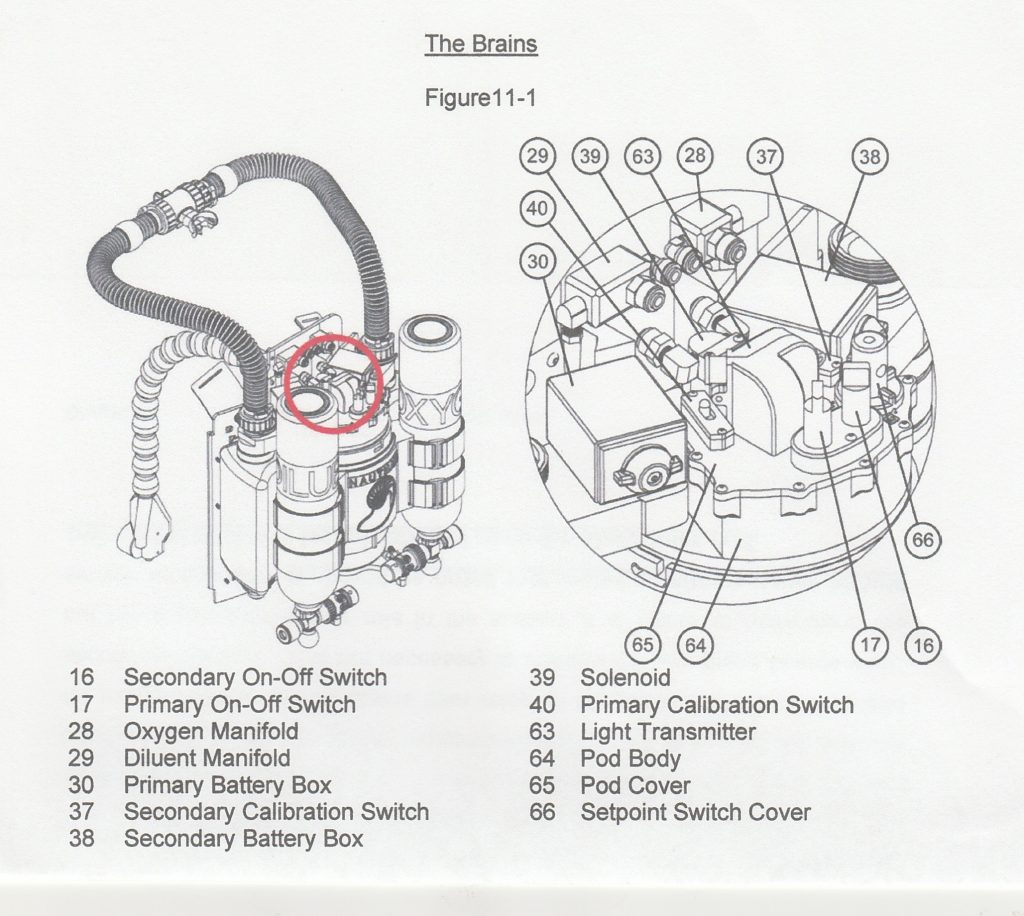
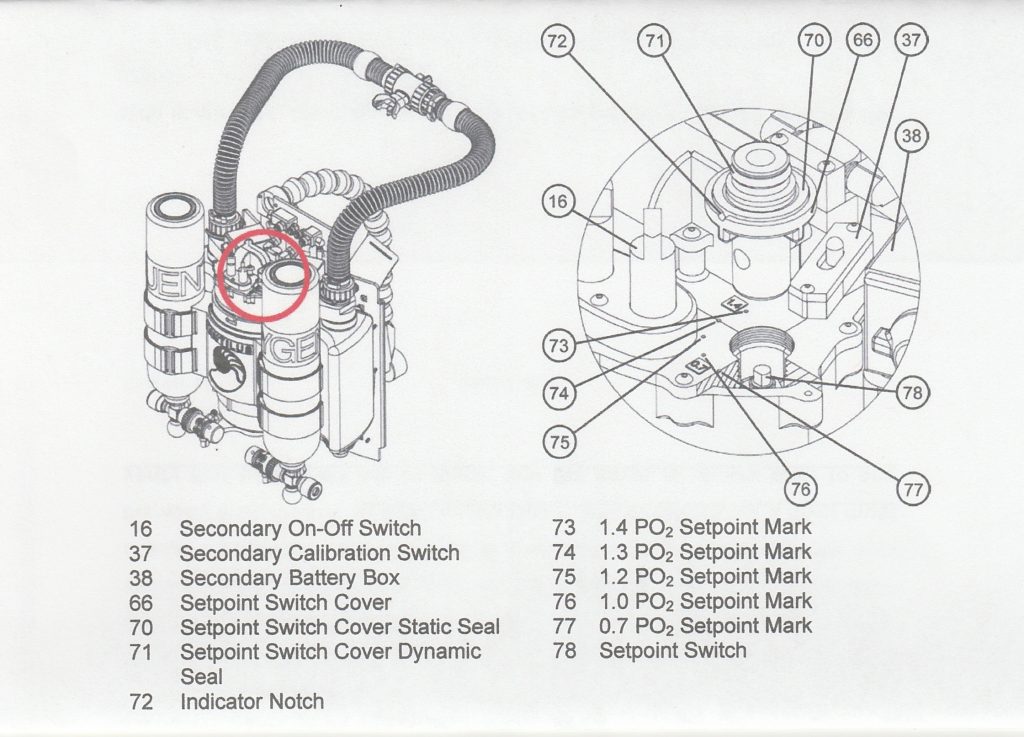

The electronics are located at the top of the Scrubber assembly, under the crown. The battery supply for the Primary and Secondary Displays are located either side of the electronics head in twin isolated and watertight battery boxes, each holding two standard 9V’s. The Primary display battery is on the left and the secondary display battery is on the right, with battery duration dependent upon work rate, water temp, manual assist etc it is usual to get between 20-40 hours of life from them. There is a low battery life indicator on the console which is illuminated when the batteries fall below 7V. The Nautilus uses magnetic switches and fiber optics. The magnetic switches are incorporated into the on/off knobs and calibration switches allowing the controls to operate without penetrating the sealed computer compartment. Fiber optics remove the necessity of hard-wired display and the associated bulkhead connection. The lights in the console are transmitted from the LEDs in the electronics pod, through the clear electronics pod cover, and then down the fiber optics to the console. This unique design results in a bright display as well as eliminating additional potential failure and leakage points.
The electronics displays and manual pneumatic additions and contents gauges are all located on the console, routed through articulating knuckles. Reading the console displays requires orientating it so that the indicators are seen as rows not columns. The top row of has 7 LEDs while the other three have 8 LEDs.
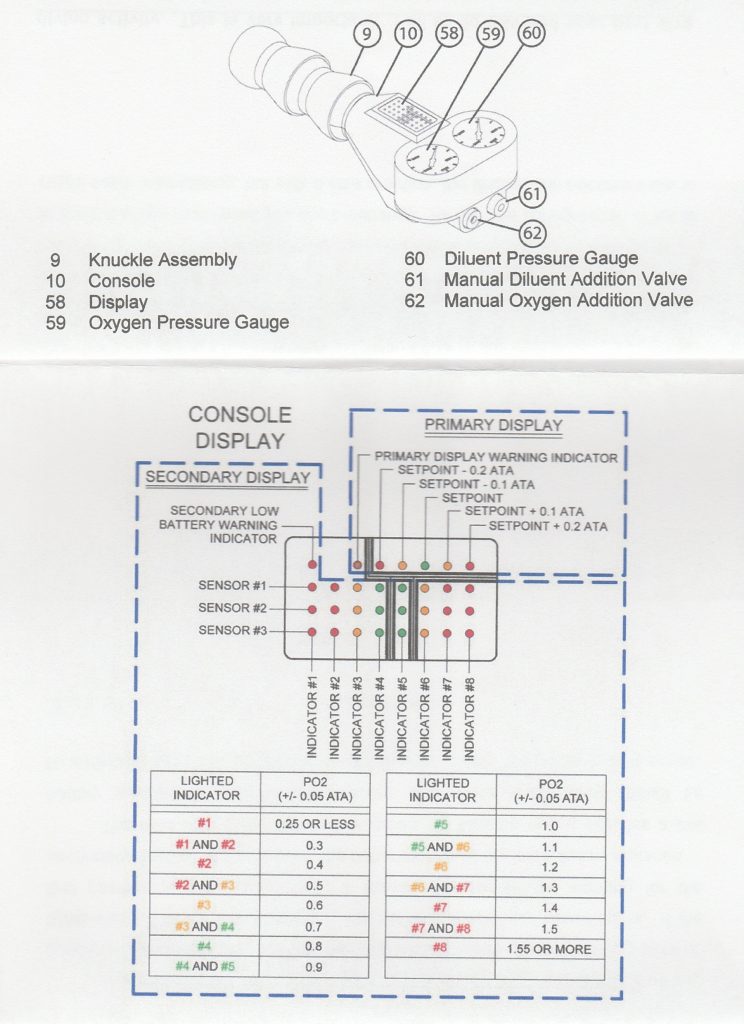
Left to right the first light is the secondary battery warning which flashes red when the battery falls below 7V. Then there is a small gap before the primary display lights. Again the first left light of the primary is the alarm, which is bi-coloured flashing red for low primary battery and green for sensor warning (0.2PO2 adrift). Should it alternate between the colours then both alarms are activated. The remaining five indicators show left to right are very high, high, setpoint, low and very low. The lower three rows are the secondary and show all three sensor status simultaniously, sensor #1 at the top and sensor #3 at the bottom, furthest from the Primary LEDs. Again the same protocol as the primary of illuminating left to right the LEDs to show very high, high, setpoint, low and very low alarms in gradients of +/- .05ATA is used.
The pneumatic side of the unit rely on Catalina S19 supply cylinders, through ScubaPro MK2 regulator assemblies. Breathing gases are directed around the system via colour coded supply whips
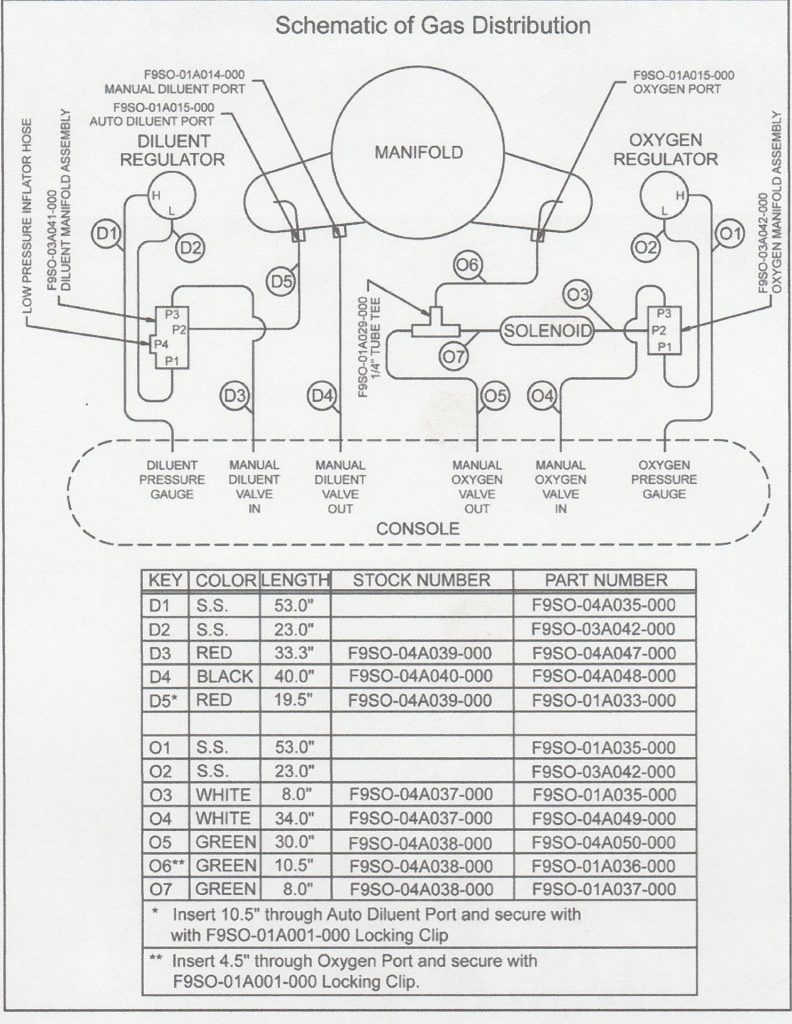
From the diluent regulator there are two braided stainless steel covered lines. One, the high pressure line, runs directly to the diluent gauge and the other one, the low pressure line, runs to the port #1 on the diluent manifold. From the oxygen regulator there are two braided stainless steel covered lines. One, the high pressure line, runs directly to the oxygen gauge and the other one, the low pressure line, runs to port #1 on the oxygen manifold. Except for the low pressure BCD inflator hose, which is attached to port #4, all the lines from the diluent manifold are red in color. The line from diluent port #2 goes through the ADV (automatic diluent valve) port on the manifold and is connected to the ADV, which is located at the top of the intake counterlung
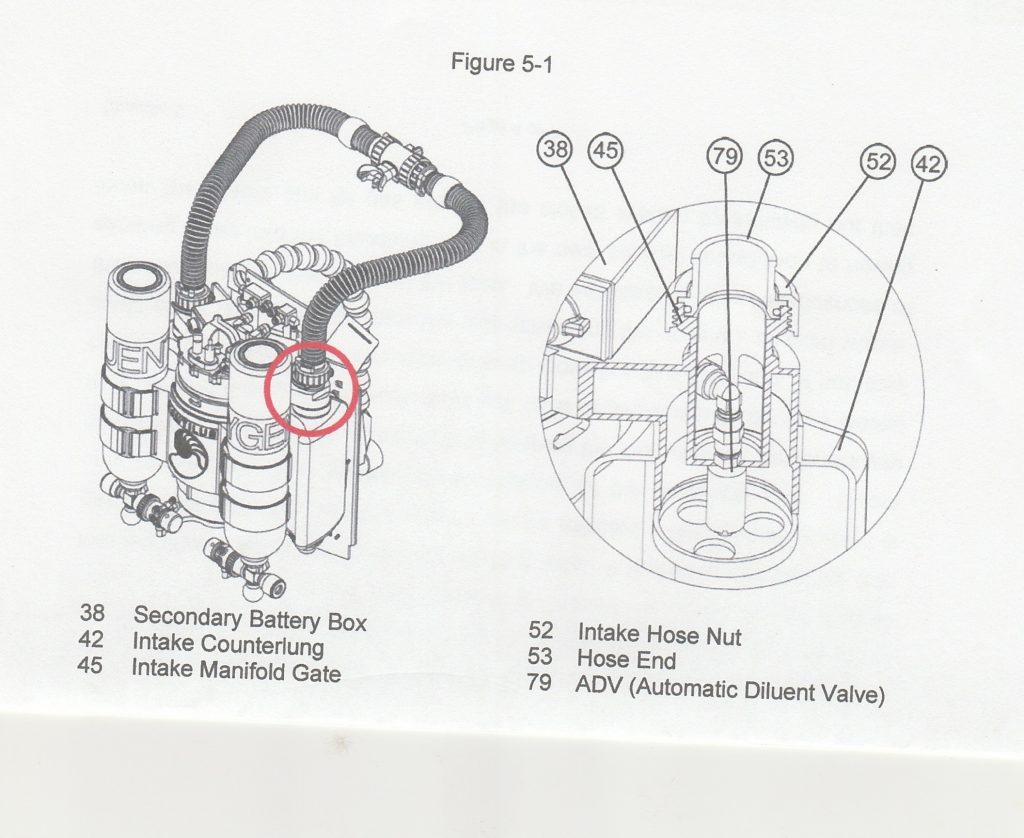
The line from diluent port #3 passes through the knuckle assembly and is attached to the manual diluent addition valve, which is located in the console (insert ports and console inner routing). Both lines from the oxygen manifold are white in color. The line from port #2 is connected to the solenoid in port. The line from port #3 passes through the knuckle assembly and is attached to the manual oxygen addition valve, which is located in the console. You can remember the circuit by the color of the lines: If the line is red it is a low-pressure diluent supply line that is connected to the diluent regulator. If the line is black it is a breathing loop input line that is metered by the manual diluent addition valve. If the line is white it is a low-pressure oxygen supply line that is connected to the oxygen regulator. If the line is green it is breathing loop input line that is either metered by the solenoid or the manual oxygen addition.
The Nautilus incorporates a rigid canopy to protect the main components, this is easily removed to access components as needed for maintenance and calibration. It has a simulated wet finish on the outer shell which helps as a scratch guard. It has a harness similar to a backpack.
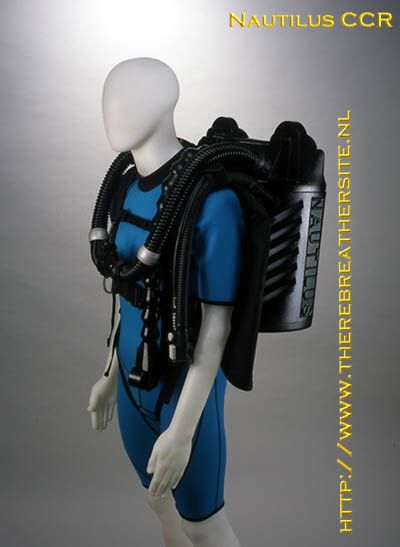
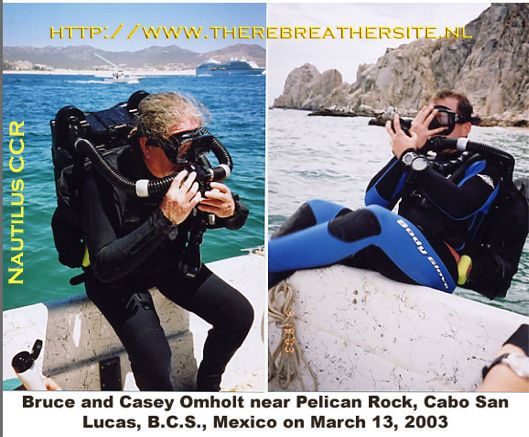
Bruce Donald Omholt
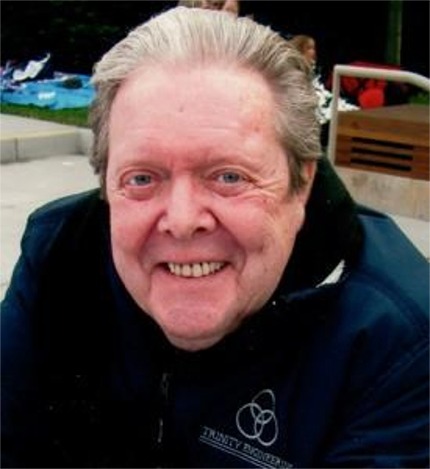
Bruce developped a new type of closed circuit rebreather called the Nautilus CCR.
Bruce Donald Omholt of Rohnert Park, California, passed away at the age of 72 in Santa Rosa Memorial Hospital on Thursday, March 3, 2016. Bruce was born on March 27, 1943, in Salem Oregon. Bruce moved to Santa Rosa in 1957 and later attended an academy in Milo, Oregon, then graduated high school at the San Pasquel Academy in Escondido, California. His higher education took him to Heald Engineering College in San Francisco where he graduated with a degree in Mechanical Engineering in June of 1964 taking just over two years to complete his BSME His thesis was on Composite Propellant Grain and Nozzle Design resulting in testing his own rocket. Bruce worked in various engineering positions for Ford Motor Company in Michigan from 1964 to 1975. After which he was employed by E. F. Hauserman in Cleveland, Ohio, as Chief Engineer from 1975 to 1977. In Grand Rapids, Michigan, he took the position of Director of Product Engineering and Development for the American Seating Company from 1977 to 1980. Bruce’s hobby for motorcycles inspired him to develop a prototype called the Tricon. This invention paved the way for his company, Trinity Engineering. The company was started in Grand Rapids, but soon relocated to Rohnert Park in 1981. Bruce retired from actively running Trinity in 1998. Hobbies in life included dabbling with various inventions, golf, motor cross, and his passion for scuba diving. Bruce was first scuba diving as a boy putting together his gear from the local hardware store. Later, he continued the sport while dredging for gold in the South Fork of the Salmon River. He was officially scuba certified in 1992. From there, he tried to learn as much about the sport as possible exploring every aspect. Bruce was a cave, trimix, and rebreather diver traveling to many exotic places to enjoy his passion. After retiring from Trinity Engineering, Bruce started a new endeavor dedicated to developing a new type of closed circuit rebreather called the Nautilus CCR. He continued this project from 1998 to 2013. Towards the closure of the Nautilus Rebreather Project, the company reorganized as Nautilus Dive Tech in Cabo San Lucas, Mexico. The shop continues to teach and guide all levels of scuba divers. Throughout his life, Bruce enjoyed the camaraderie of his local bar. Countless people were impacted by his sense of humor, generosity, wisdom, and free advice. He will be deeply missed by his family and friends.
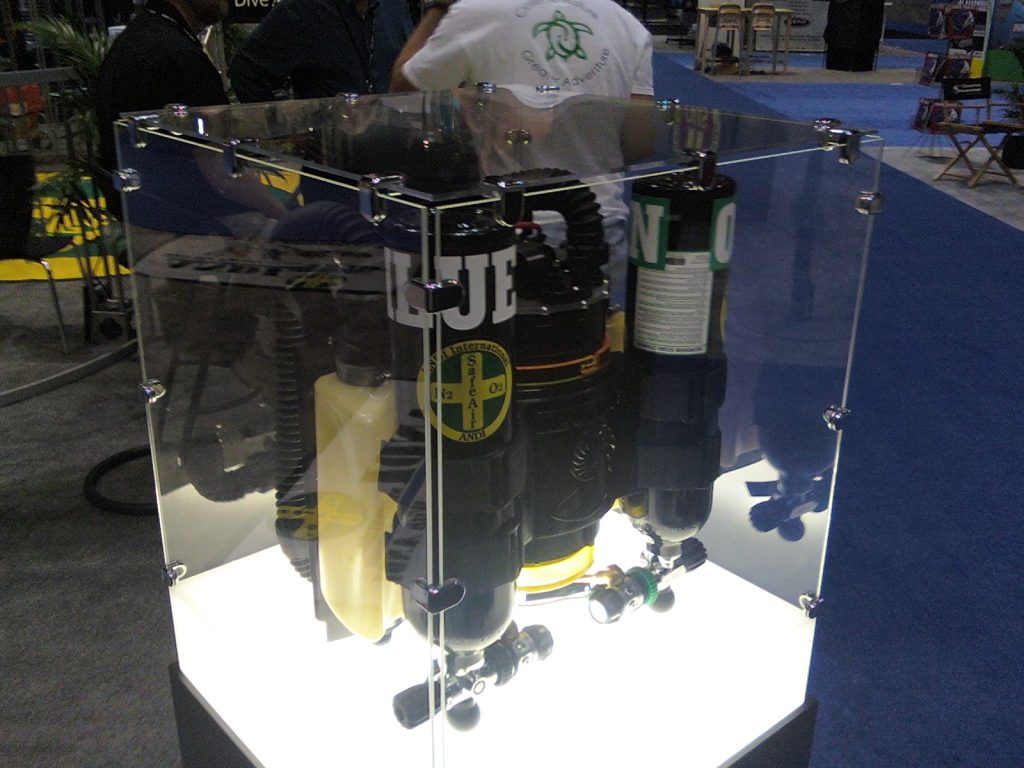
The Nautilus was manufactured at B and E Manufacturing in Cabo San Lucas, BCS, Mexico. B and E Manufacturing is located on Miguel Hidalgo between 20 de Noviembre and Revolucion in Cabo San Lucas, BCS, Mexico.
Copyright © 2002 B and E Manufacturing S. A. de C. V. Nautilus is a trademark of B and E Manufacturing, Hidalgo Entre Revolucion Y 20 de Noviembre, POB 195, Cabo San Lucas, BCS, Mexico 23401
U.S. Patent pending
An extra thank you to Sharon Readey who made it possible to tell you this adventure of development. She invested a lot of time in the compilation of this article for which I am very grateful to her!

Therebreathersite was founded by Jan Willem Bech in 1999. After a diving career of many years, he decided to start technical diving in 1999. He immediately noticed that at that time there was almost no website that contained the history of closed breathing systems. The start for the website led to a huge collection that offered about 1,300 pages of information until 2019. In 2019, a fresh start was made with the website now freely available online for everyone. Therebreathersite is a source of information for divers, researchers, technicians and students. I hope you enjoy browsing the content!
